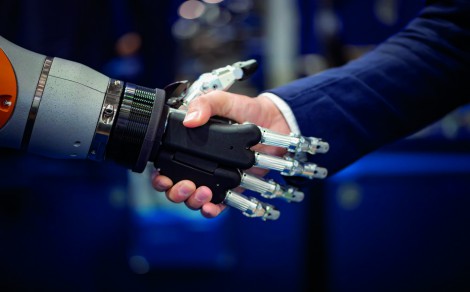Know your robots

There is rarely, if ever, a one-size-fits-all approach to manufacturing. It is important that site managers know what considerations to make when choosing an industrial robot to automate their processes. Jonathan Wilkins, director of industrial parts supplier EU Automation, discusses what he believes manufacturers should consider when choosing what type of robot to invest in.
Industrial robots have long been used to replace human workers in performing tasks that are dangerous, dirty or repetitive. These robots are often large and bulky, caged machines used to do the heavy lifting in applications such as packaging and palletising. Multiple industrial robots can be integrated for a fully automated production line, but it is important that site managers choose the right robot for the job.
Knowing your robots
There are three types of industrial robot that are commonly used to automated manufacturing processes. The first of these is the six-axis robot that has traditionally been a popular choice for manufacturers. They operate using six-axis of motion, sometimes called the six degrees of freedom, and are ideal for applications that require complex motions. Crucially, programming of these machines is easy, so operators don’t need to have advanced programming skills to use them. These robots can make use of AI software and machine learning to pick up processes and improve on them – self-coding their programmes when necessary.
Next, is the Selective Compliance Assembly Robot Arm (SCARA) family of robots that are very popular in small robotic assembly applications. SCARA robots have a solidly mounted base in a fixed position and the arm is rigid in the z-axis, offering rotational motion in the xy-axis.
Finally, there are collaborative robots, otherwise known as cobots, that have been designed to work safely alongside humans in a shared workspace. These robots, with their increased flexibility and dexterity, can complete more delicate tasks that conventional robots cannot, such as polishing fragile materials in the production process. Demand for this technology is on the rise, with the global cobot market expected to reach $9 billion by 2025.
Which to choose
Manufacturers need to consider the production speed and volume that they are looking to achieve when deciding what type of robot to adopt in their facility. Manufacturers in sectors such as bottling or packaging, that need a much higher production speed or volume, can benefit from purchasing conventional robots like the six-axis robot. The logic is simple. Fewer human operators means there is less chance to slow the system down and production will increase. Multiple industrial robots can be integrated for a fully automated production line.
Because of their flexibility, and relative ease of use compared to fully automatic robotic systems, cobots are generally considered to be an affordable and attractive choice for small and medium sized businesses. These manufacturers can benefit from the traditional value proposition of robots – namely that they can carry out repetitive or unsafe tasks, freeing up human workers to add value – but at a much lower cost of entry.
-
PPMA 2025
23 September, 2025, 9:30 - 25 September, 2025, 16:00
NEC, Birmingham UK -
Advanced Engineering Show 2025
29 October, 2025, 9:00 - 30 October, 2025, 16:00
NEC, Birmingham UK










